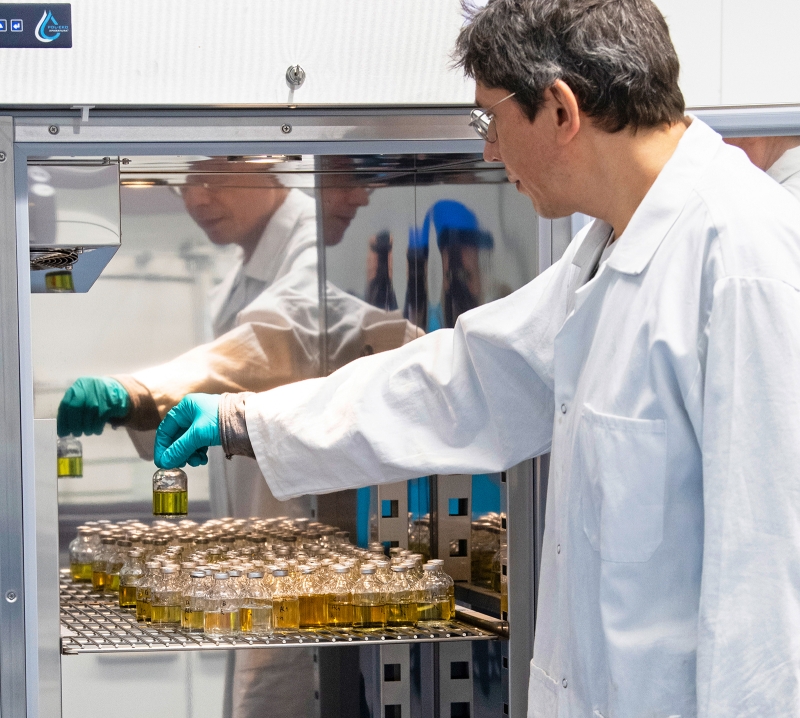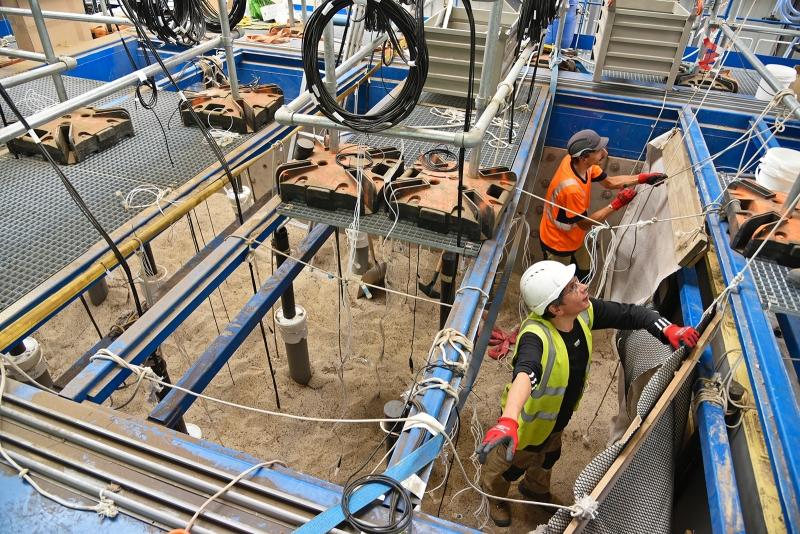Treatability tests for PFASs using reducers. © BRGM - D. Depoorter
Risks and spatial planning
Outstanding result / Major advances in understanding and managing PFAS
PFASs are ‘forever pollutants’, well known to chemists, and also to environmentalists. The name covers per- and polyfluoroalkyl substances with highly specific chemical properties that justify their use in many industrial fields and in everyday products. They can be found in technical clothing, fire-fighting foam, stain- and water-resistant coatings, floor coverings, food packaging, etc.
At the same time, however, they persist for very long periods in the environment, lingering in soil, groundwater and other media. PFASs are harmful to the environment and also to human health. As a result, they are of huge importance from a scientific, media, legal and political standpoint. These forever pollutants need to be treated in such a way as to reduce concentrations in the soil and groundwater. This will involve major clean-up operations using appropriate techniques.
BRGM involved in several major projects
Given the complexity of this issue, managing PFASs raises a number of R&D challenges. Extensive technical support will be required in research studies to understand and treat polluted groundwater, sites and soil, at both local and national level. BRGM has initiated a number of studies combining a range of complementary scientific disciplines, since treating soil polluted by PFASs will require an approach that addresses the issue from several different angles: modelling, decontamination, analytical developments and destruction. BRGM has been working in all these areas for over five years, as part of a number of projects: PERFECT, PERMUTE, CONCERTO, PFAStwin and H2020 PROMISCES. Several major advances were made in this area in 2023.
Extracting PFAS from soil
A number of aspects have been addressed as part of the PROMISCES project coordinated by BRGM and financed by the European programme H2020 as part of the Green Deal, whose purpose is to “contribute to the deployment of the circular economy by reducing the risks associated with certain industrial pollutants, in particular PFASs”. The PRIME platform for remediation and innovation in environmental metrology was also involved.
Implementation of a large-scale experiment to monitor and decontaminate porous media, removing Perfluoroalkyl and Polyfluoroalkyl Substances (PFASs) in the multi-metric pilot of BRGM's PRIME platform. © BRGM - P. Vassal
Modelling
BRGM has highlighted the fact that the transport of PFASs does not follow standard rules for the behaviour of organic pollutants when they are transferred from the soil to groundwater. Interface effects must be taken into account in the models. This should make it possible to predict the migration of these substances in order to plan remediation work. To achieve this, numerical models have been developed to simulate experimental work from the laboratory to the field scale.
Remediation: extraction and destruction
On the one hand, remediation involves extracting PFASs from soils using so-called non-Newtonian fluids to treat the different lithological layers, even when they vary in permeability. BRGM has developed specific liquids called rheofluidifiers to overcome soil anisotropy (where properties vary depending on the direction considered) and to scan the different soil layers in a homogeneous manner. Through desorption (gas extraction) or solubilisation, these liquids can be used to extract PFASs! BRGM has also developed decontamination techniques to destroy certain PFASs using two different approaches: advanced chemical reduction and oxidation.
Analysis
Several approaches have been developed, ranging from the most comprehensive to the most specifically targeted. Analytical development has also made it possible to quantify and analyse more than 55 PFAS molecules in several types of environment.
This entire chain of work involves researchers from several disciplines (chemistry, numerical modelling, fluid mechanics, etc.), all of which are prominent at BRGM.
Note that after analytical developments and laboratory experiments, BRGM's PRIME platform has enabled a change of scale for in situ demonstration and modelling, with a test phase on a multi-metric scale. This is a platform for testing monitoring methods under controlled conditions, studying the migration of PFASs in groundwater and soil and testing remediation techniques.












